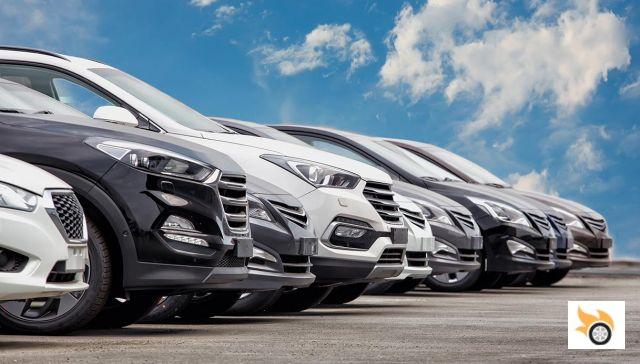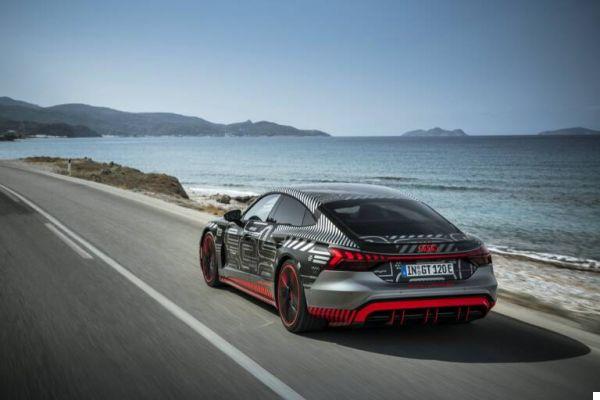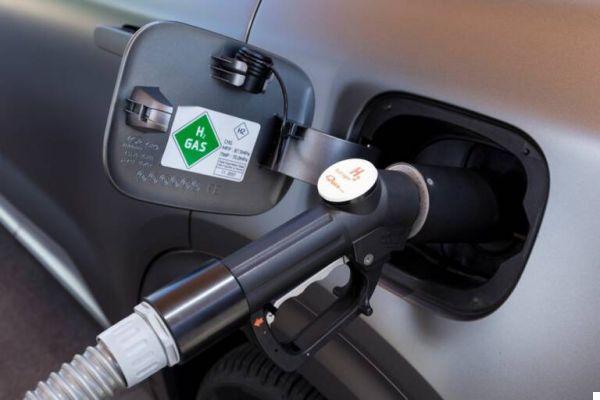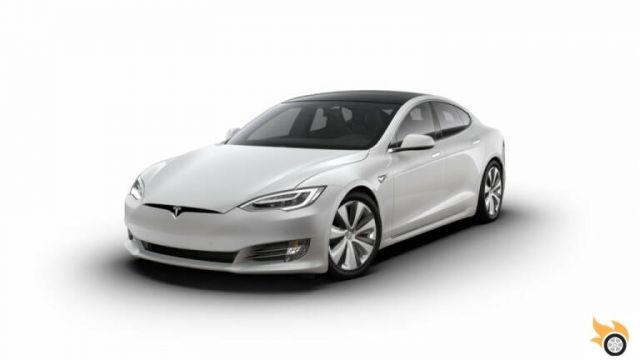
The first "real" electric cars date back to the dawn of motoring more than 150 years ago, when in 1859 the Frenchman Gaston Planté invented the lead battery that allowed to transport the electricity needed to move the car. To better understand what era we are talking about, Italy would have been unified only 2 years later and Karl Benz, known as the "father of the car", was probably playing in a playground when he was 15 years old.
This introduction serves to explain that, however innovative and technological they may seem, electric or hybrid cars are concepts well known to automotive engineers. Concepts so old that they predate the founding of almost every manufacturer still alive today.
But then, why did electric cars lose popularity compared to gasoline or diesel engines? The answer is exactly the same answer that is holding back their popularity in 2019: price. When in 1908 Henry Ford introduced the Model T, the first mass-produced car, the average selling price was $850. The average electric car costs $1750. As the British say"money talks" (money talks, and almost always loudly).
For years they have been coming back into the spotlight due to increased awareness of climate change and the impact that the automotive sector, one of many, has on our planet.
What are the differences between electric and hybrid?
- The electric car is a car that is powered exclusively by the electrical energy stored in the on-board batteries. To recharge the batteries it is necessary to connect to a charging station, either public or private, and wait for the recharge.
- A hybrid car is a carwith two engines, a traditional thermal engine, usually petrol, and an electric one. Hybrids are divided into "mild hybrid" and "plug-in".
- Mild hybrids use the electric motor to assist, not replace, the main engine in moving the car, especially when stationary. The batteries are recharged by braking the car.
- Plug-in hybrids are the middle ground between a conventional car and an electric car. Their electric motor can, for a few kilometres, completely replace the combustion engine in propelling the car. Due to the high electricity consumption, plug-in hybrids, as the name suggests, can be connected to charging columns.
What are the pros and cons of electric cars and the pros and cons of hybrid cars?
It's not easy to choose between electric and hybrid cars, given the many factors to consider, but this chart should help you understand the differences
Hybrid car | Electric car | |
Price |
It's not as competitive as petrol or diesel but, thanks to incentives and tax breaks, it can be affordable for many. | Normally electric cars have the highest price in their class. However, incentives can reduce their cost and make them more competitive with petrol or hybrids. |
Eco-incentives |
2500 euros with scrappage 1500 euros without scrapping (2nd Ecobonus 2019 Ecobonus band for cars up to 70 g/km CO2)
|
6000 euros with scrapping 4000 euros without scrapping (1st Ecobonus 2019 Ecobonus band for cars up to 20 g/km CO2) |
Range | Up to 160 km in electric mode, more than 500 km in thermal mode. | Up to 450 km for the most efficient cars |
Circulation | Free circulation in LTZs (like Area C in Milan, until 2022) and during traffic blockades. | Free circulation in the LTZs (like Area C in Milan) and during traffic blockades |
Maintenance | No different from a petrol car. The cost can go up if the problems are related to the electric motor. | Technically speaking, there are fewer parts, and therefore fewer things that can break, making maintenance less frequent . When something does break, costs can be high and mechanics can repair a few more. |
Consumption | Low in city traffic, higher than petrol on the motorway due to the weight of the batteries. | Technically nil, in practice they are linked to the cost of electricity used for charging |
Emissions | Reduced, especially when starting and stopping at traffic lights in the city. Higher than petrol on the motorway due to the weight of the batteries. | However, you have to consider the energy sources from which you get the electricity to recharge. If we burn coal, our nice electricity will probably pollute more than a truck. |
Refueling | Very easy given the extensive network of gas stations. However, in the case of top-ups, it can be difficult to find a column due to the lack of a dense nationwide network. | The lack of a dense network of charging stations limits range and makes refueling difficult, especially in the South. If space permits, many people install a charger in their garage. |
Safety | Excellent, the level of protection and safety is given by the model but is still in line with all EU regulations. | Apart from a few rare cases of exploding batteries, almost all electric cars are equipped with state-of-the-art safety systems. |
Value over time | Good, especially in mild hybrid versions. | There is not enough data, however, the "expiration" of batteries reduces their long-term value. |
What are the 2019 incentives for electric and hybrid cars?
TheEcobonus2019 is a government stimulus designed to make the car fleet, which is one of the highest in Europe, cleaner and older than the average car age of 11 years. The 2019 Ecobonus for cars provides for two levels of membership based on CO2 emissions, with corresponding discounts, and the scrapping of a Euro 1,2,3, or 4 class vehicle. Without scrapping a car, you can benefit from the 2019 Ecobonus, albeit with a smaller discount. Discounts only apply if the value of the car purchased is less than 61,000 euros (VAT included).
- 1st band, emissions between 0 and 20 g/km: basically all electric cars are included. The eco bonus is a maximum of 6,000 euros with scrappage, it drops to 4,000 euros without scrappage.
- 2nd band, emissions up to 70 g/km: basically all hybrid cars are included. The eco bonus is a maximum of 2500 euros with scrappage, drops to 1500 euros without scrappage.
What are the incentives for electric cars in Lombardy in 2019?
FromOctober 2019 in Lombardy you can benefit from an additional discount of € 6000 for electric cars and a mandatory discount of 12% made by the dealer. This means that for the purchase of an electric car in Milan the total discount reaches the exorbitant amount of 14,000 euros!
It may be true that in Italy we are late to the game of state eco-incentives, but this measure of the new government gives a very clear signal of where to go.
Are there any other incentives for electric cars in 2020?
Environment Minister Sergio Costa announced that new tax breaks on the purchase price of electric cars will be introduced in his "Climate" Legislative Decree, with a view to further encouraging sustainable transport and a low environmental impact. It is not yet clear exactly how much these discounts will amount to, but it is easy to assume that it will be around 2,000 euros .
If this were the case, a citizen interested in buying an electric car in Milan could benefit from incentives of 16,000 euros, a figure so large that the price of many electric cars currently considered by many as too expensive would be really competitive.
So should we buy a hybrid or electric car?
Now that we've explained the pros and cons of hybrids and electrics, choosing which is best for you is up to you! Our opinion is as follows
| choose a hybrid car if: | ...you choose an electric car if...: |
|
|






